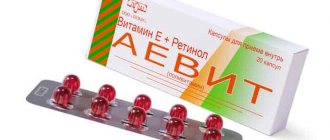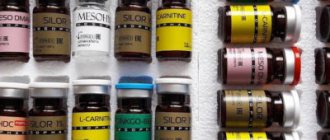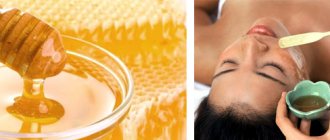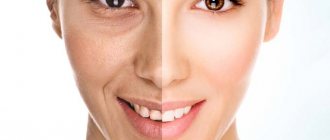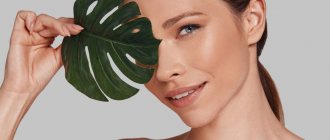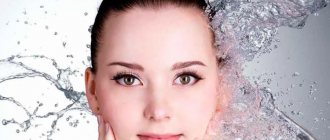Is it possible to restore collagen in the skin?
Collagen molecules are shaped like triple springs that are embedded in the tissue. This property ensures the density and elasticity of the skin, in which it returns to its original state even with strong stretching.
Over time, collagen springs become weaker and do not return to their twisted shape well. Because of this, the former elasticity of the skin and its turgor are lost. It recovers worse and becomes flabby.
The main peak of collagen fiber destruction occurs during the period of decreased sexual activity. This is due to a decrease in hormone production. Estrogen levels in menopausal women rapidly decrease, which leads to rapid aging and the appearance of wrinkles. In men, testosterone production decreases gradually, so they develop wrinkles more slowly.
A reduced amount of collagen leads to more than just cosmetic problems. Its consequence, along with wrinkles, sagging skin, and increased dryness, are the following manifestations:
- Poor mobility of joints, pain in them, crunching caused by wear and destruction of cartilage.
- Reduced bone density and strength, susceptibility to fractures, which heal with great difficulty.
- Low strength of blood vessel walls.
- Brittle hair and nails.
All these signs have a negative impact on both health and appearance. Modern women, even during menopause, remain highly active and energetic, so they want to maintain their attractiveness and thick, smooth skin. This requires restoring collagen production and using the right cosmetics.
The role of “youth proteins” for the dermis
Which layer of skin contains collagen and elastin? To answer this question, it is necessary to consider, at least in general terms, the structure of the outer integument of a person.
So, the skin consists of three main layers:
- epidermis;
- dermis;
- hypodermis.
The upper level - the epidermis - protects the body from external influences. The hypodermis consists of fatty tissue, which participates in the process of thermoregulation and protects internal organs from shock, and, if necessary, acts as a source of nutrition.
And the most interesting layer of the skin is the dermis. It is in it that the largest number of collagen and elastin fibers are located, immersed in a gel of water and hyaluronic acid. The latter nourishes protein compounds and surrounds them with a protective layer.
This is interesting. The skin is 75% collagen and 2-3% elastin, which are found in the lower, reticular layer of the dermis.
Bundles of fibrillar fibers intersect in a diamond shape, forming a strong three-dimensional network. The long sides of these figures are the very lines of least stretch along which it is recommended to massage and apply cosmetics.
It is the dermis that determines the thickness and composition of the skin in different parts of the body. So, on the soles, elbows and palms, the tissue is thicker and the collagen content is higher. In areas with active mobility (face, inner elbows and knees, neck), the dermal layer is thinner and more filled with elastin.
Use of collagen for cosmetic purposes
In order to make the skin more youthful and elastic, the following methods are used:
- Stimulating the body's own production of collagen.
- Application of collagen externally – internally and externally.
There are three types of collagen depending on its origin:
- Animal is the cheapest and most accessible type, produced from the tissues of cattle as a hydrolysate. This substance has a number of disadvantages. Due to its large molecules, it does not penetrate the skin well and can provoke allergic reactions. Due to mad cow disease, bovine collagen is not in great demand. This type of substance can also be obtained from pig or donated human tissue.
- Plant collagen is obtained from wheat proteins, it is much less likely to become a source of allergies, and is perfectly absorbed by humans. But the method of obtaining it is complex and expensive, moreover, in the full sense of the word this substance cannot be called collagen, since it is present exclusively in the tissues of living beings: birds, fish, animals.
- Marine collagen is obtained from fish skin. It is highly digestible, but easily provokes allergic reactions. To reduce negative manifestations, a component is used that is obtained from freshwater fish specially bred under controlled conditions.
Ways to restore collagen
The synthesis of collagen by the body is associated with the presence of the proper amount of vitamins, especially vitamin C. An equally significant role is played by the presence of other important substances - vitamins A, E and D, as well as components for the formation of proteins - amino acids.
The main ways to restore high collagen levels:
- Proper, balanced and enriched nutrition with vitamins and minerals. The diet should be varied and nutritious, rich in foods containing collagen.
- Use of dietary supplements. Dietary supplements are present on the market in huge quantities. The question of choice is only to identify the safest and most proven, effective product from a well-known one. Various collagen preparations from Japanese companies have proven themselves to be excellent.
Cosmetics containing collagen
There are many different products containing collagen on the market. These are tonics, lotions, serums, creams and masks from many manufacturers from around the world. When using them, you need to take into account the possibility of an individual reaction to the composition.
Masks are most often used. They can be fabric, impregnated with special active serums with this substance, as well as powder, which must be diluted immediately before use. All these means are convenient and effective, but only with long-term use in courses, and not once.
Making masks at home
The basis for such products is most often food gelatin. It acts as the basis of a mask or cream, which may include many auxiliary components.
Gelatin is diluted as written on the package. The composition includes mashed ripe banana. Kefir or yogurt and a teaspoon of wheat flour are added to the mask for oily skin; oatmeal and fresh fat milk are added to the composition for dry skin. The mixture is mixed and applied in a thick layer. The dried mask is soaked using a sponge dipped in milk or fermented milk products, then washed off. The mask not only rejuvenates, but also perfectly nourishes aging skin.
To obtain the product, take the following components:
- Gelatin.
- Glycerol.
- Fresh liquid honey.
- Pure water.
All components are measured out into a teaspoon, mixed, applied to the face for 20 - 30 minutes, and washed off carefully with warm water.
This product is intended for lifting and is suitable for different skin types, depending on what will complement the main mass. For the base, gelatin is prepared as described on the package.
Any fermented milk product is added to the finished gelatin, for example, natural yogurt without fillers and sugar, kefir, yogurt. This mask cleanses and tightens the skin well, moisturizes it, lightens pigmentation and blackheads. To obtain a thicker mass, add flour or black bread crumb to the mixture. The latter option is ideal for very oily, porous and rough skin with enlarged pores and poor complexion.
This type of skin requires more nutrition, so high-fat milk or cream, as well as ground oatmeal, are added to the product to thicken and enhance its properties.
When applying gelatin masks, it is important to be at rest, lie relaxed, not talk or grimace.
- Brightening mask
Mashed vegetables are added to the prepared gelatin, for example, cucumber crushed into pulp. The mask has another useful property - it not only lightens pigmentation, but also perfectly moisturizes the epidermis.
The effect of cosmetics with collagen
The use of collagen in different forms, especially the combination of oral intake in the form of dietary supplements and in the form of masks, creams and serums externally helps maintain dense, elastic skin, prevents sagging tissues and changes in the oval of the face, and the early appearance of wrinkles.
At the same time, homemade masks are no less effective and help with different skin types. With their help you can achieve the following results:
- Activation of cell renewal processes.
- Strengthening tissue regeneration.
- Improving blood supply to all layers of the skin.
- Restoring tissue firmness and elasticity.
- Pronounced improvements in facial contours, reduction of sagging and wrinkles.
- Changing the oval of the face.
- Removing toxins.
- Reduces signs of aging.
In order to get pronounced and long-term results, you need to make masks with collagen, use creams and essences, as well as dietary supplements with this important component regularly, over a long period of time.
“Proteins of youth” or what are collagen and elastin?
Collagen and elastin are the main proteins of our body. Together they form a kind of frame that maintains the strength and elasticity of the tissues. Both substances accumulate and retain water, expanding noticeably under its influence. All this makes the skin smooth and plump, and the body toned.
This is interesting. Collagen, being the main component of connective tissue, makes up almost 33% of all proteins present in the body. Moreover, half of the substance is in the bones of the skeleton, 35% in the dermis and 10% in the intercellular matrix of internal structures.
Why do we mention these two proteins together? The fact is that they work in pairs and mutually support each other.
Collagen
Collagen is the most abundant protein in the animal world. Its molecule can be synthesized by almost all types of organisms - from humans to bacteria. At the same time, green crops are completely devoid of this ability and everything that is called vegetable protein is nothing more than a marketing ploy by manufacturers. A similar substance is obtained biotechnologically or chemically from wheat proteins.
Real collagen, like any protein, consists of many amino acids assembled into a polypeptide chain. Three such threads (fibrils) are twisted into a right-handed spiral, held together by cross-links. Due to its unusual structure, collagen has low elongation and enormous tensile strength. It is this strong substance that makes up ligaments, tendons, articular cartilage and skeletal bones.
In an aqueous environment, the thickness of the triplet increases by 50%, but at the same time the fiber itself is shortened by a third of its length. The ability to swell is more characteristic of young fibrils.
Elastin
The second most important protein in our body. Responsible for the elasticity of tissues and is present in those parts of the body where the greatest stretchability is required. For example, the walls of blood vessels consist of 40% elastin. There is enough of it in ligaments and tendons that are subject to frequent twisting.
This is interesting. In women, the largest amount of protein is present in the breast tissue, so the condition of this area is considered a kind of indicator of youth. As soon as the breasts begin to lose their roundness and seductive shape, we can talk about a deficiency of “rubber” protein.
Elastin, like collagen, is produced in fibroblasts and then exits them into the intercellular substance, where it is assembled into polypeptide chains. The strength of the fibers is noticeably inferior to collagen, they are longer and thinner in structure.
Why does our skin age?
It is generally accepted that with age, the synthesis of “youth proteins” decreases noticeably. However, it is not. Today, more and more scientists are inclined to believe that the rate of polypeptide metabolism is influenced not by the quantity, but by the quality of fibrillar fibers.
Why is this happening? Collagen and elastin, being organic substances, go through all phases of development - from birth to death. A molecule that has served its useful life undergoes decomposition and is excreted from the body.
Ideally, the process should be balanced - as much new substance is formed, as much old substance is destroyed. This is exactly what happens in the body of a young healthy person. But with age, the established harmony is disrupted - there is less and less complete protein, and more protein that is not destroyed by collagenase. What is the reason for this phenomenon?
Firstly, fibroblasts age and lose the ability to produce new substances: the synthesis of organic collagen decreases after 25 years. The situation is even worse with elastin. Its formation slows down from the age of 7, and in older people it stops altogether.
Secondly, every year the amount of oxidants in the body increases, which change the molecular structure of protein. Such “irregular” fibers become inaccessible to collagenase and continue to fill the intercellular space.
Thus, the condition of the dermis does not depend on the total amount of elastin and collagen, but on the ratio of young and old protein in the dermis.
Various unfavorable factors also slow down the production of a new substance: exposure to ultraviolet radiation, neglect of a healthy lifestyle, addiction to alcohol and tobacco, unbalanced diet. The problem can be aggravated by constant stress, illness, as well as a deficiency of its own hyaluronic acid.

